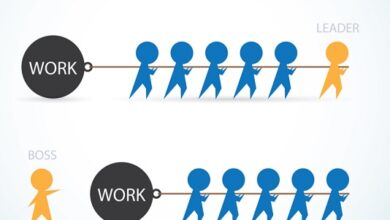Administrative Routines their activities and 8 tips to optimize
Administrative Routines
Administrative routines are the mundane but fundamental activities for any company. Based on their good structuring, it is possible to take the next steps towards the development of the organization.
When hearing the expression “administrative routines” do you feel bored and think that they are bureaucratic and monotonous procedures?
Know that it’s good to change your mind, because no matter how innovative and strategic a company’s activities are, it’s impossible to think about their success without the structured process that these routines offer.
After all, a company’s core activities begin with basic, mandatory and everyday tasks and these need to be standardized so that the entire flow is mapped, controlled and successfully carried out. But what are administrative routines, exactly?
These are routine activities, but fundamental for the company to function in a systematic way. As much as they refer to boring things, they are the real gears that impact all other internal actions and require some technical knowledge.
They are known as primary and support processes , therefore, they play an essential role for the company to carry out even the most strategic activities.
Continue on to understand how they relate to all sectors and the importance of good management in this regard. In this article we will talk about:
What are the activities of administrative routines
Receiving the definition of “basic” may not be enough for actions that demand good practices and, often, mastery of standards and techniques, such as administrative activities. They represent much more than the ordinary; are the cornerstone of any organization.
We can say that all the actions of a company depend on the good performance of administrative services. Think, for example, how the company would be empty — and unproductive — if employees couldn’t go to work because their transport vouchers were not well managed and deposited in time?
What if payments were delayed and this impacted the entire organizational climate , generating worker dissatisfaction?
Also imagine if customers call the company and do not get service and this causes loss of sales. Or, if there is a lack of materials or essential inputs for the manufacture of products?
Examples abound to illustrate the relevance of these activities and how much they impact the progress of other processes. There are many, however, here we will mention the main functions of professionals working in the administrative area:
- issue invoices and receipts to customers;
- control the input and output of materials;
- manage employee benefits;
- manage payroll;
- make payments to suppliers ;
- carry out formal admission and dismissal processes;
- monitor cash flow ;
- organize documents;
- schedule admission or dismissal exams;
- operate equipment aimed at administrative activities, such as time and attendance ;
- make and answer telephone calls;
- register information about the business or employees in the systems.
Who should perform these activities?
Know that performing administrative activities goes far beyond administration professionals.
As there are several functions, the responsibility of each one depends on the company’s organizational format, business model and even size.
In many, the Personnel Department professionals perform activities aimed only at employees; in others, HR employees also perform these tasks. However, the ideal is for each sector to carry out the actions that are more centralized in its scope.
The creation of an administrative area in which one professional is responsible for receiving calls and serving customers and another being responsible for managing functions aimed at employees is another example of an ideal scenario.
That is, the accumulation of tasks in the same professional should be avoided so as not to impact the health of workers .
In addition, it is worth mentioning that within all the areas existing in a company, there is a need to have specific professionals to develop administrative routines such as the financial, commercial, information technology, communication and other sectors.
The impacts of a poorly managed administrative area
Starting a business is always challenging, but keeping it running and taking steps towards growth is even more complex.
Did you know that more than 60% of companies that are opened close their doors in approximately five years?
One of the main causes, in addition to lack of planning and little experience in administration, is poor management.
It is possible to have an idea, because if, in both personal and professional life, we need a routine to accomplish what we want (and need) on a daily basis, imagine how relevant this is for organizations!
Only through it is it possible to standardize services and keep fundamental tasks up to date. And if such essential activities as these are not given due attention, the company will run the risk of having its business growth jeopardized. This means that if any process is done poorly, there will be failures throughout the organizational cycle.
Therefore, if the administrative routines are not being well managed and executed with perfection, the company can not remain competitive and offer the ideal to its customers and employees. In this way, it is impossible to present sustainable growth over time.
8 tips to optimize administrative activities
Defining what the administrative routines of an organization will be is so important that, according to Sebrae, this is one of the causes that most influence the closing of a company.
More than 20% of those who ended their activities did not identify what their most basic tasks would be, let alone establish those responsible. Understand how!
1. Identify and align what the administrative processes will be
The first step is to understand the business and, from there, identify the need for each activity and prepare the plan for the next actions to be carried out .
For example: has demand increased and is it necessary to hire a person to answer calls and answer customer questions?
What, specifically, will this new collaborator’s activities be? To whom should he direct the calls in each case?
What technical skills should this person have? These are some issues that, even to carry out a routine activity, there is a need for efficient planning.
2. Establish structuring standards
Each administrative routine will vary according to the profile of the company and the type of business, however, there is a common pattern that can be adopted by companies from different segments:
- mapping: make a mapping of the company’s departments (or an organizational chart);
- regulation : prepare internal regulations on policies and organizational structure and promote knowledge of the material among all members;
- technical manual : create a routine manual with all the necessary rules for carrying out the main activities; if possible, from each sector.
These actions make it possible to standardize the processes that are carried out by the company, regardless of the entry or exit of employees.
Thus, whoever is joining the company will be able to develop each activity with the same quality standard as the person who left the position.
3. Promote employee training
A company can only offer a good flow of activities if its workers have been trained to perform their duties effectively.
It’s no use, for example, to hire a person who has no experience in personnel routines and charge high productivity if he doesn’t receive training for it, right?
4. Guide the managers
In addition to preparing the planning of his sector, the manager has the mission to guide his team, supervise the activities, predict the results and maintain, in addition to measuring and identifying what is working and what is not to be corrected .
However, in the rush of daily routine, many of them do not pay attention to these responsibilities and that is when management problems begin to arise.
It is HR’s role to draw attention to these points among the organization’s leaders. As well as the fact that it is only by knowing their team that each manager will be able to direct each activity to the right professional, taking advantage of the skills and competences of each one.
5. Use technology to your advantage
The expression “administrative routines” is synonymous with carrying out usual practices, but this does not mean that they necessarily need to be tedious, time-consuming or always done in the same way. On the contrary!
It is precisely when there is bureaucracy or a routine that processes need the help of technology to be carried out in a more agile, standardized, optimized way that results in fewer operational errors .
Examples of this are organizing documents online; manage time attendance virtually and offer remote assistance to employees.
6. Reward teams
Not everyone adapts to more systematic routines and processes, but as we have seen, carrying them out is fundamental to the company’s success.
Therefore, a good way to motivate employees who work in this area is to reward them in a way that is interesting for them and for the company.
It is possible to set goals for carrying out the main procedures and reward employees with additional salary, gifts, time off, flexible working hours, granting of benefits, among other viable alternatives for both.
7. Check the quality standard from time to time
We said earlier that administrative processes don’t need to be time consuming and should count on technology as an ally, right?
This freedom of structuring must also be understood from the point of view of quality, in relation to the way in which each activity is carried out.
If the company adopts the same standards of many years ago, this can be reviewed and improved from the change in the behavior of its audience, the innovation that technology offers or even a new organizational culture.
Reviewing standards is often synonymous with growth for the company. So get out of the way!
8. Promote culture change
In many companies there is still the belief that administrative services are less important than others that should be directly linked to the organization’s strategies, but this is a big mistake.
In addition to being essential in any segment, they influence the entire company. Therefore, the mistaken culture that certain sectors are more or less important must be extinguished in a company and HR has a fundamental role in this process of change.




